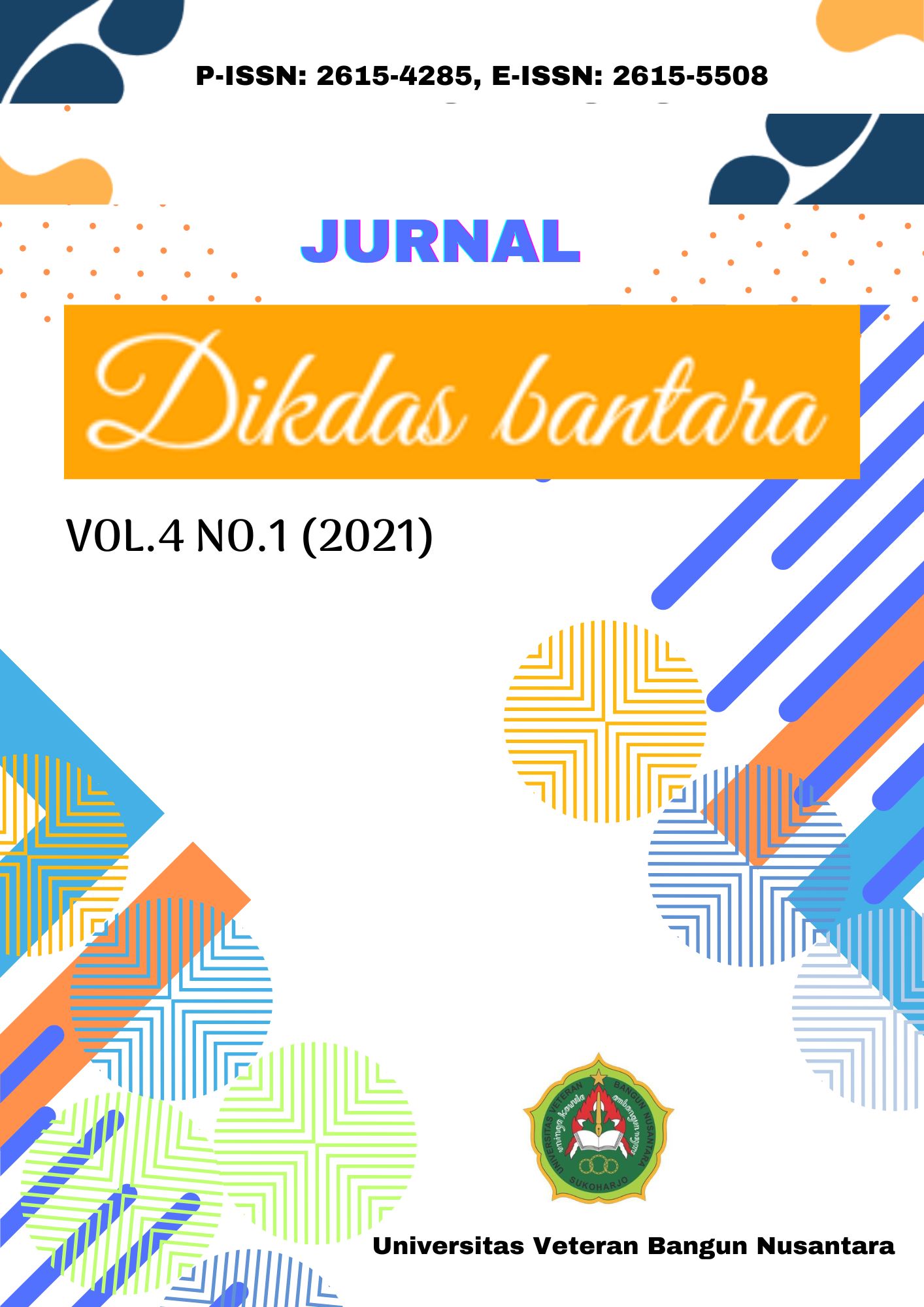PENINGKATAN HASIL BELAJAR SENI BUDAYA DAN KESENIAN (SBK) MELALUI METODE ASISTENSI
DOI:
https://doi.org/10.32585/dikdasbantara.v4i1.1233Abstrak
Penelitian ini bertujuan untuk meningkatkan hasil belajar SBK materi Memainkan Asambel Musik Tradisional Nusantara melalui metode asistensi pada siswa kelas VIII C SMP Negeri 2 Nguter tahun pelajaran 2016/ 2017. Penlitian ini adalah Penelitian Tindakan Kelas (PTK) pada kelas VIII C sebanyak 32 siswa. Pengumpulan data menggunakan metode tes, observasi, wawancara, dan observasi. Alat pengumpulan data yang digunakan adalah soal tes, lembar observasi, dan pedoman wawancara. Indikator keberhasilan pelaksanaan PTK ini adalah meningkatnya hasil belajar SBK siswa yang ditunjukkan dengan meningkatnya persentase ketuntasan siswa minimal 85% dan meningkatnya nilai rata-rata kelas, minimal menjadi 70,00. Berdasarkan hasil penelitian ini, dapat disimpulkan bahwa “Metode asistensi dapat meningkatkan hasil belajar SBK materi Memainkan Asambel Musik Tradisional Nusantara pada siswa kelas VIII C SMP Negeri 2 Nguter tahun pelajaran 2016/ 2017”.
Kata Kunci: hasil belajar SBK, asistensi.
Unduhan
Referensi
Arikunto, Suharsimi. 2010. Manajemen Penelitian. Jakarta: PT. Rineka Cipta.
Moleong. 2004. Metodologi Penelitian Kualitatif. Bandung :PT Remaja Rosdakarya.
Poerwadarminto. 2005. Kamus Umum Bahasa Indonesia. Jakarta: Balai Pustaka.
Rooijakkers, Ad. 1993. Mengajar Dengan Sukses. Jakarta: PT. Grasindo.
Slameto. 2003. Belajar dan Faktor-Faktor yang Mempengaruhinya. Jakarta: PT. Rineka Cipta.
Sugiyanto. 2007. Model-model Pembelajaran Inovatif. Surakarta :Panitia Sertifikasi Guru Rayon 13.
Unduhan
File Tambahan
Diterbitkan
Terbitan
Bagian
Lisensi
The copyright to this article is transferred to Jurnal DIKDAS BANTARA if and when the article is accepted for publication under Creative Commons Attribution-ShareAlike 4.0 International License. The undersigned hereby transfers any and all rights in and to the paper including without limitation all copyrights to Jurnal Komunikasi Pendidikan. The undersigned hereby represents and warrants that the paper is original and that he/she is the author of the paper, except for material that is clearly identified as to its original source, with permission notices from the copyright owners where required. The undersigned represents that he/she has the power and authority to make and execute this assignment.
We declare that:
1. This paper has not been published in the same form elsewhere.
2. It will not be submitted anywhere else for publication prior to acceptance/rejection by this Journal.
3. A copyright permission is obtained for materials published elsewhere and which require this permission for reproduction.
Furthermore, I/We hereby transfer the unlimited rights of publication of the above mentioned paper in whole to Jurnal Komunikasi Pendidikan. The copyright transfer covers the right to reproduce and distribute the article, including reprints, translations, photographic reproductions, microform, electronic form (offline, online) or any other reproductions of similar nature. The corresponding author signs for and accepts responsibility for releasing this material on behalf of any and all co-authors. After submission of this agreement signed by the corresponding author, changes of authorship or in the order of the authors listed will not be accepted.
Retained Rights/Terms and Conditions
1. Authors retain all proprietary rights in any process, procedure, or article of manufacture described in the work.
2. Authors may reproduce or authorize others to reproduce the work or derivative works for the author’s personal use or for company use, provided that the source and the Jurnal Komunikasi Pendidikan copyright notice are indicated, the copies are not used in any way that implies Jurnal Komunikasi Pendidikan endorsement of a product or service of any employer, and the copies themselves are not offered for sale.
3. Although authors are permitted to re-use all or portions of the work in other works, this does not include granting third-party requests for reprinting, republishing, or other types of re-use.












